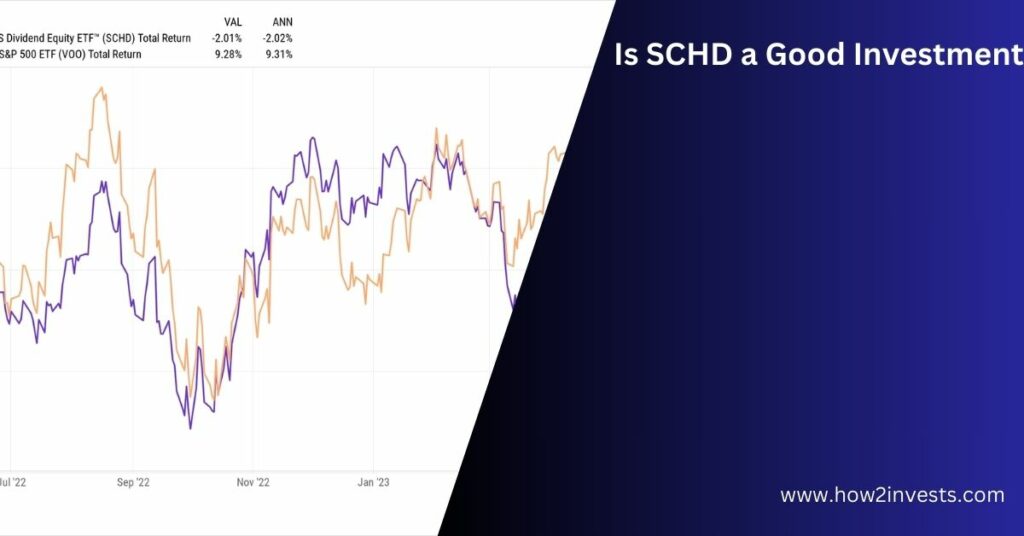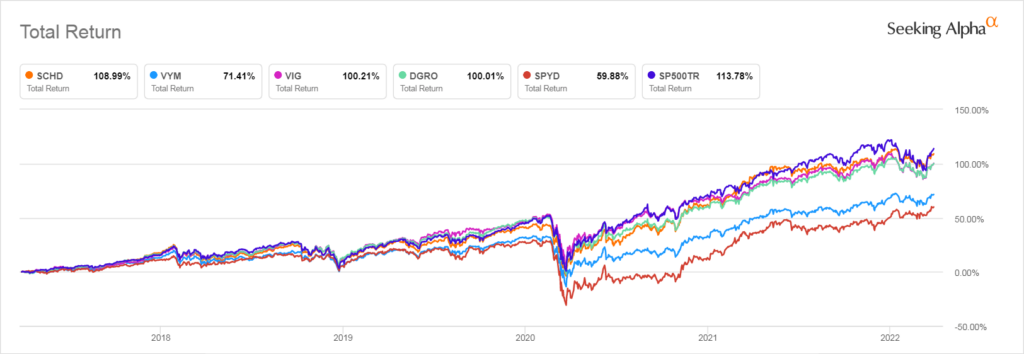Is SCHD a Good Investment? A Comprehensive Analysis

Investing is a crucial aspect of financial planning, and it requires careful consideration of various factors. One option that often comes up in discussions about dividend-focused investments is SCHD, which stands for the Schwab U.S. Dividend Equity ETF. In this article, we’ll delve into the details of SCHD and explore whether it is a good investment option for you.
What is SCHD?
SCHD is an exchange-traded fund (ETF) managed by Charles Schwab Investment Management. This ETF aims to provide investors with exposure to U.S. companies that have a history of paying consistent and reliable dividends. In essence, it is designed to track the performance of the Dow Jones U.S. Dividend 100 Index, which includes high-quality dividend-paying stocks.
The Case for Dividend Investing:
Before diving into SCHD specifically, it’s important to understand the broader concept of dividend investing. Dividend investing involves buying stocks or funds that provide regular income through dividend payments. Many investors are attracted to this strategy for several reasons:

Steady Income: Dividend-paying investments can provide a reliable source of income, making them particularly appealing for retirees or those seeking passive income.
Historical Performance: Dividend-paying stocks have historically outperformed non-dividend-paying stocks over the long term.
Lower Risk: Dividend payments can act as a cushion during market downturns, helping to mitigate losses.
Analyzing SCHD:
Now, let’s examine the key factors that make SCHD an interesting investment option:
Diversification: SCHD offers investors exposure to a wide range of U.S. companies across various sectors. This diversification can help spread risk and reduce the impact of poor-performing stocks.
Dividend Aristocrats: The ETF primarily invests in companies with a history of consistent dividend payments, often referred to as “Dividend Aristocrats.” These companies are typically financially stable and have a track record of weathering economic downturns.
Low Expense Ratio: SCHD boasts a relatively low expense ratio compared to many actively managed funds. This means that a smaller percentage of your investment is eaten up by fees over time.
Reinvestment: Reinvesting dividends can help accelerate the growth of your investment. SCHD’s dividends can be reinvested automatically, compounding your returns.
Long-Term Growth: While dividend-focused investments may not provide the same level of growth as some high-risk stocks, they can still offer substantial long-term capital appreciation.
Factors to Consider:
While SCHD has several appealing features, it’s essential to consider the following factors before investing:
Risk Tolerance: SCHD is not completely risk-free. While it may be less volatile than some other investments, it can still be affected by market fluctuations.
Income Goals: Assess whether SCHD aligns with your income goals and whether its dividend yield meets your needs.
Tax Considerations: Dividend income may be subject to taxation, so it’s important to understand the tax implications of your investment.
Market Conditions: Economic conditions and interest rate changes can impact dividend stocks, so be prepared for potential shifts in your investment’s performance.
Performance and Historical Returns:
Track Record: Analyze the historical performance of SCHD compared to its benchmark index and other relevant benchmarks. Look at how it has performed during bull and bear markets.

Total Return: Consider not only the dividend yield but also the total return, which includes capital appreciation in addition to dividend income. Assess how SCHD has generated returns over time.
Risk-Adjusted Returns: Evaluate SCHD’s risk-adjusted returns, such as the Sharpe ratio, which measures the return generated for each unit of risk taken. This can help you determine whether SCHD’s risk-return profile aligns with your investment objectives.
Dividend Growth: Examine the fund’s track record of increasing dividend payments over the years. Consistent dividend growth can be a positive indicator of a company’s financial health.
Composition and Sector Exposure:
Top Holdings: Explore the fund’s top holdings and sector allocations. Understanding which companies and sectors make up the majority of the ETF can provide insights into potential risks and opportunities.
Sector Diversification: Assess how well SCHD is diversified across various sectors. Overly concentrated exposure to a single sector can increase risk if that sector experiences difficulties.
Industry Trends: Consider current industry trends and economic conditions to determine whether the sectors in which SCHD invests are poised for growth or facing challenges.
Geographical Exposure: Although SCHD primarily focuses on U.S. companies, evaluate any exposure it may have to international markets, as global economic events can influence the fund’s performance.
Dividend Yield and Payout Ratios:
Dividend Yield: Examine the current dividend yield of SCHD. Compare it to other dividend-focused investments and assess whether the yield meets your income requirements and expectations.
Payout Ratio: Analyze the fund’s payout ratio, which indicates the percentage of earnings a company distributes as dividends. A high payout ratio could signal potential sustainability issues.
Dividend Growth Rate: Investigate the historical and expected dividend growth rate of SCHD. A consistent and healthy growth rate can indicate financial strength and the ability to weather economic downturns.
Dividend Sustainability: Assess the sustainability of SCHD’s dividend payments, considering factors such as the underlying companies’ earnings and cash flow trends.
Tax Considerations and Costs:
Tax Efficiency: Understand the tax implications of investing in SCHD. Dividend income may be taxed at different rates depending on your tax bracket and the source of the dividends.
Qualified Dividends: Determine whether SCHD’s dividends qualify for preferential tax rates, as qualified dividends are taxed at a lower rate for most investors.
Capital Gains: Consider the tax treatment of capital gains if you decide to sell your SCHD shares. Capital gains may be subject to capital gains tax.
Expense Ratio: Pay close attention to the fund’s expense ratio, as it affects your overall returns. Lower expense ratios generally mean more of your investment’s growth goes to you rather than covering fees.
Trading Costs: Evaluate any trading costs associated with buying and selling SCHD shares, including commissions and bid-ask spreads.
Conclusion:
SCHD can be a solid addition to your investment portfolio, especially if you are seeking reliable income from dividend payments and are willing to take a moderate level of risk. It offers diversification, exposure to well-established companies, and a track record of consistent performance.
However, as with any investment, it’s essential to conduct thorough research, assess your financial goals, and consult with a financial advisor if necessary.
Remember that diversification across different asset classes and a long-term investment horizon are key principles of sound investing. SCHD may not be suitable for everyone, so make sure it aligns with your individual financial objectives and risk tolerance before making any investment decisions.
Also Read:
- Unlocking Opportunities Käntäjää: The Translator Investment Advantage
- Unveiling the Käntäj Investment Plan: A Roadmap to Financial Success
- Kääbntäjä : A Guide to Money Investment”
- How Are Bozullhuizas Partners Ltd? Business Model, Services, and Reputation
- Unveiling the Mystery: The Enigmatic World of 2045996879




